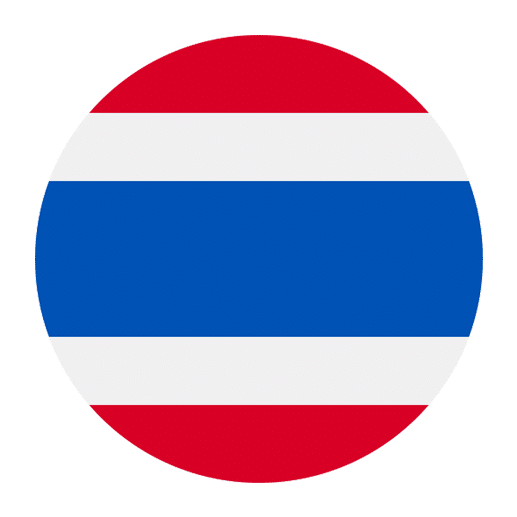The culinary landscape of Southeast Asia is a vibrant tapestry of flavors, techniques, and traditions, with each country contributing its unique touch to the region’s gastronomic identity. Among these, Thailand stands out not only for its aromatic and flavorful dishes but also for its linguistic influence on the cuisine of neighboring countries. The Thai language, with its rich array of culinary terms, has left a significant imprint on regional cuisine terminology, shaping how dishes are named, described, and understood. This article delves into the influence of Thai on regional cuisine terminology, exploring the historical, cultural, and linguistic factors that have facilitated this fascinating exchange.
Historical and Cultural Context
Thailand’s geographical position at the heart of Southeast Asia has made it a crossroads of cultures, trade, and migration. Historically, the region has seen the movement of people, goods, and ideas, leading to a rich exchange of culinary practices and terminologies. The influence of the Thai language on regional cuisine terminology can be traced back to several key historical and cultural factors:
Trade and Commerce: Thailand’s strategic location along major trade routes facilitated the exchange of goods and culinary practices with neighboring countries such as Cambodia, Laos, Myanmar, and Malaysia. As merchants and traders interacted, they shared not only their goods but also their culinary terminologies.
Migration and Ethnic Diversity: Thailand has a diverse population, including various ethnic groups such as the Chinese, Malay, and Indian communities. This diversity has enriched Thai cuisine and, in turn, influenced the culinary languages of neighboring regions.
Cultural Diplomacy: The spread of Buddhism from India to Southeast Asia brought with it a cultural exchange that included culinary practices. Monks and pilgrims traveling through the region carried with them not only religious teachings but also culinary knowledge and terminology.
Political Influence: Historical periods of Thai dominance over neighboring regions, such as during the Ayutthaya and Sukhothai kingdoms, also contributed to the spread of Thai culinary terminology. The influence of the Thai court and its cuisine extended beyond its borders, leaving a lasting impact on regional culinary languages.
Linguistic Features of Thai Culinary Terminology
To understand the influence of Thai on regional cuisine terminology, it’s essential to examine the linguistic features that characterize Thai culinary terms. Thai culinary terminology is rich and descriptive, often reflecting the ingredients, cooking methods, and cultural significance of dishes.
Ingredient-Based Terminology: Thai culinary terms frequently highlight the main ingredients used in a dish. For example, “pad thai” (ผัดไทย) directly translates to “Thai stir-fry,” with “pad” meaning “stir-fry” and “thai” indicating the national origin of the dish. This ingredient-based approach is also seen in terms like “som tam” (ส้มตำ), meaning “papaya salad,” where “som” refers to the sour taste and “tam” to the pounding process used in its preparation.
Cooking Methods: Thai culinary terminology often incorporates the cooking method used to prepare a dish. For instance, “tom yum” (ต้มยำ) is a famous Thai soup, where “tom” means “boil” and “yum” refers to the spicy and sour seasoning. Similarly, “grilled” dishes are often labeled with “yang” (ย่าง), such as “gai yang” (ไก่ย่าง) for grilled chicken.
Flavors and Seasonings: Thai cuisine is renowned for its balance of flavors, and this is reflected in its culinary terminology. Terms like “nam pla” (น้ำปลา) for fish sauce and “nam prik” (น้ำพริก) for chili paste highlight the importance of seasonings in Thai cooking. Additionally, flavor descriptors such as “khao” (ข้าว) for rice and “wan” (หวาน) for sweet are commonly used.
Cultural Significance: Some Thai culinary terms carry cultural or symbolic meanings. For example, “khao soi” (ข้าวซอย) is a Northern Thai noodle dish, where “khao” means “rice” and “soi” can refer to the act of slicing or cutting, symbolizing the preparation process. These cultural nuances add depth to Thai culinary terminology.
Influence on Cambodian Cuisine
Cambodian cuisine, known for its unique blend of flavors and ingredients, has been significantly influenced by Thai culinary terminology. This influence is evident in the names of dishes, cooking methods, and ingredient descriptions used in Cambodian cuisine.
Shared Dishes: Several Cambodian dishes have names that closely resemble their Thai counterparts due to historical interactions and cultural exchanges. For example, “amok” is a popular Cambodian dish made with fish, coconut milk, and spices, similar to the Thai dish “ho mok” (ห่อหมก). The similarity in names reflects the shared culinary heritage of the two countries.
Cooking Techniques: Cambodian cuisine has adopted Thai cooking techniques and terminology. The use of the term “somlar” (សម្លរ) in Cambodian cuisine, meaning “soup” or “stew,” is akin to the Thai term “tom” (ต้ม) for boiling. This linguistic borrowing underscores the influence of Thai culinary practices on Cambodian cooking methods.
Ingredient Names: The names of ingredients in Cambodian cuisine also show Thai influence. For instance, “kroeung” (គ្រឿង), a term used in Cambodian cuisine to refer to a type of spice paste, is similar to the Thai term “krueng” (เครื่อง), meaning “ingredients” or “tools.” This linguistic similarity highlights the shared culinary vocabulary between the two cuisines.
Influence on Laotian Cuisine
Laotian cuisine, known for its simplicity and emphasis on fresh ingredients, has also been influenced by Thai culinary terminology. The close geographical proximity and cultural ties between Thailand and Laos have facilitated the exchange of culinary practices and language.
Shared Vocabulary: Laotian cuisine shares many culinary terms with Thai cuisine. For example, the Laotian term “tam mak hoong” (ຕຳໝາກຫຸ່ງ), meaning “papaya salad,” is similar to the Thai “som tam” (ส้มตำ). Both terms describe the same dish, highlighting the linguistic and culinary connections between the two countries.
Cooking Methods: The influence of Thai cooking methods is evident in Laotian cuisine. The use of “ping” (ປິ່ງ) in Laotian cuisine, meaning “grilled” or “barbecued,” is akin to the Thai term “yang” (ย่าง). This shared terminology reflects the adoption of Thai grilling techniques in Laotian cooking.
Ingredient Names: Laotian cuisine has borrowed Thai ingredient names, further illustrating the linguistic influence. For instance, the Laotian term “khao niaw” (ເຂົາໜຽວ), meaning “sticky rice,” is similar to the Thai “khao niao” (ข้าวเหนียว). This borrowing of ingredient names underscores the close culinary relationship between the two cuisines.
Influence on Burmese Cuisine
Burmese cuisine, characterized by its diverse flavors and regional variations, has also been influenced by Thai culinary terminology. The historical interactions and cultural exchanges between Thailand and Myanmar have contributed to the adoption of Thai culinary terms in Burmese cuisine.
Shared Dishes: Burmese cuisine features dishes with names that resemble their Thai counterparts. For example, “laphet thoke” (လက်ဖက်သုပ်), a Burmese tea leaf salad, shares similarities with the Thai “yam” (ยำ) salads, which are typically spicy and tangy. The shared terminology reflects the culinary exchange between the two cuisines.
Cooking Techniques: The influence of Thai cooking techniques is evident in Burmese cuisine. The use of “hin” (ဟင်း) in Burmese cuisine, meaning “curry,” is similar to the Thai term “kaeng” (แกง). This linguistic borrowing highlights the adoption of Thai curry-making techniques in Burmese cooking.
Ingredient Names: Burmese cuisine has incorporated Thai ingredient names, demonstrating the linguistic influence. For instance, the Burmese term “nga” (ငါး), meaning “fish,” is similar to the Thai “pla” (ปลา). This borrowing of ingredient names underscores the shared culinary vocabulary between the two cuisines.
Influence on Malaysian Cuisine
Malaysian cuisine, known for its rich and diverse culinary heritage, has also been influenced by Thai culinary terminology. The historical interactions and cultural exchanges between Thailand and Malaysia have facilitated the adoption of Thai culinary terms in Malaysian cuisine.
Shared Dishes: Malaysian cuisine features dishes with names that closely resemble their Thai counterparts. For example, “laksa” is a popular Malaysian noodle soup, similar to the Thai “khao soi” (ข้าวซอย). The similarity in names reflects the shared culinary heritage of the two countries.
Cooking Techniques: The influence of Thai cooking techniques is evident in Malaysian cuisine. The use of “goreng” (fried) in Malaysian cuisine is similar to the Thai term “tod” (ทอด), meaning “deep-fried.” This linguistic borrowing highlights the adoption of Thai frying techniques in Malaysian cooking.
Ingredient Names: Malaysian cuisine has borrowed Thai ingredient names, further illustrating the linguistic influence. For instance, the Malaysian term “ikan” (fish) is similar to the Thai “pla” (ปลา). This borrowing of ingredient names underscores the shared culinary vocabulary between the two cuisines.
The Role of Media and Globalization
In the modern era, the influence of Thai culinary terminology on regional cuisine has been further amplified by media and globalization. The proliferation of Thai restaurants, cookbooks, cooking shows, and online platforms has introduced Thai culinary terms to a global audience, facilitating their adoption in regional and international cuisines.
Thai Restaurants: The global popularity of Thai cuisine has led to the establishment of Thai restaurants in many countries. These restaurants often retain the original Thai names of dishes, contributing to the spread of Thai culinary terminology. Diners around the world become familiar with terms like “pad thai,” “tom yum,” and “green curry,” incorporating them into their culinary vocabulary.
Cookbooks and Cooking Shows: Thai cuisine has been extensively featured in cookbooks and cooking shows, further promoting Thai culinary terminology. Renowned chefs and culinary experts showcase Thai dishes and explain their ingredients and cooking methods, popularizing terms like “nam pla,” “khao soi,” and “som tam.”
Online Platforms: The rise of social media and online cooking platforms has facilitated the exchange of culinary knowledge and terminology. Food bloggers, influencers, and cooking enthusiasts share Thai recipes and culinary tips, introducing Thai terms to a global audience. Online tutorials and recipe videos often retain the original Thai names of dishes and ingredients, promoting their adoption in regional cuisines.
Conclusion
The influence of Thai on regional cuisine terminology is a testament to the rich cultural and linguistic exchange that has characterized Southeast Asia for centuries. The historical interactions, trade, migration, and cultural diplomacy between Thailand and its neighboring countries have facilitated the adoption of Thai culinary terms in Cambodian, Laotian, Burmese, and Malaysian cuisines. The descriptive and culturally significant nature of Thai culinary terminology has enriched the culinary languages of the region, adding depth and nuance to the way dishes are named, described, and understood.
In the modern era, the role of media and globalization has further amplified the spread of Thai culinary terminology, introducing it to a global audience. The global popularity of Thai cuisine, coupled with the proliferation of Thai restaurants, cookbooks, cooking shows, and online platforms, has facilitated the adoption of Thai culinary terms in regional and international cuisines.
As language learners and culinary enthusiasts, understanding the influence of Thai on regional cuisine terminology offers a fascinating insight into the interconnectedness of cultures and the dynamic nature of language. It highlights the power of food as a medium of cultural exchange and the enduring legacy of culinary traditions in shaping our linguistic and gastronomic landscapes.

